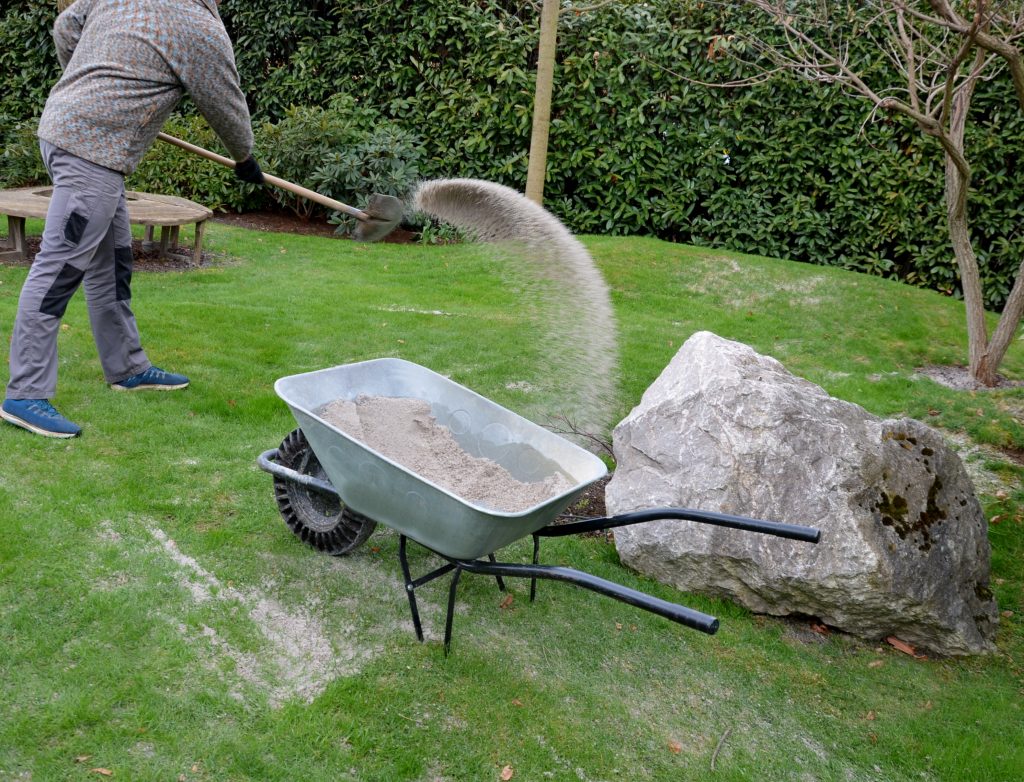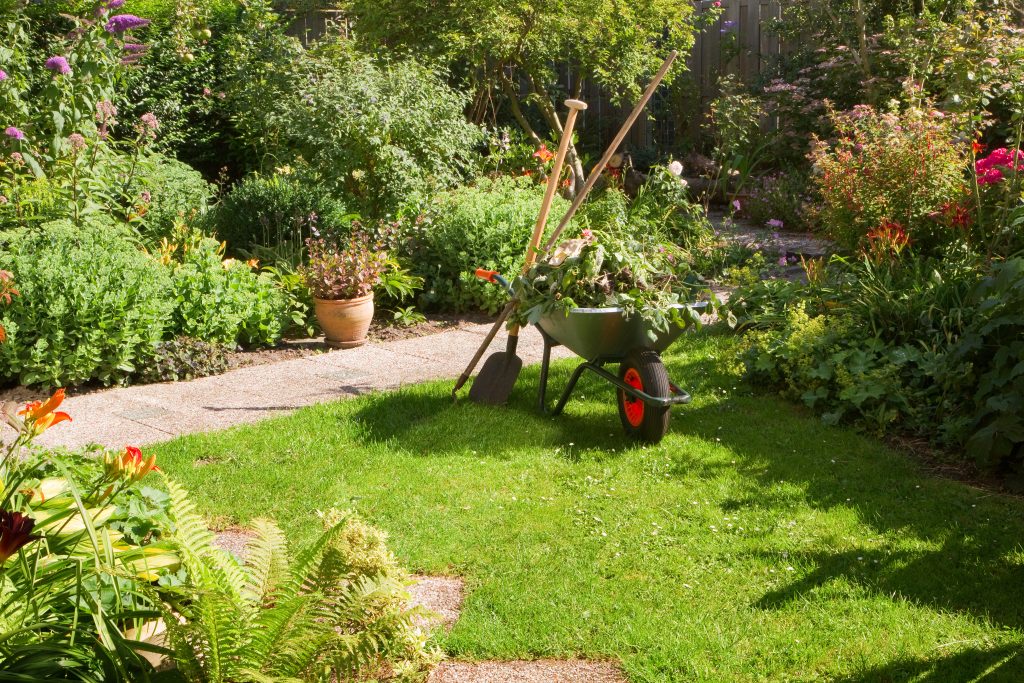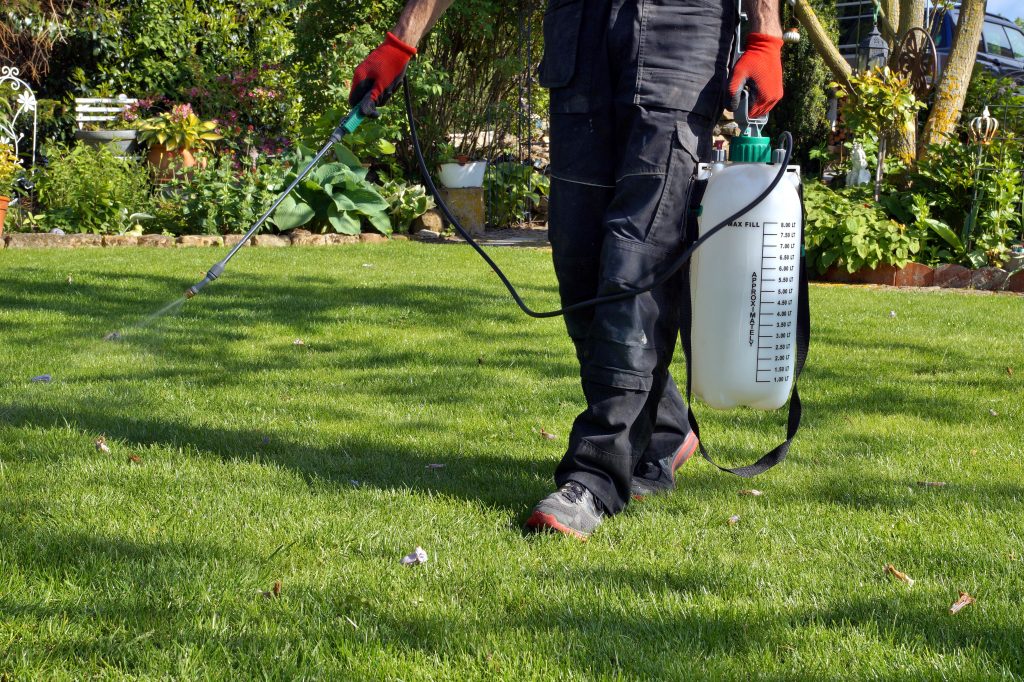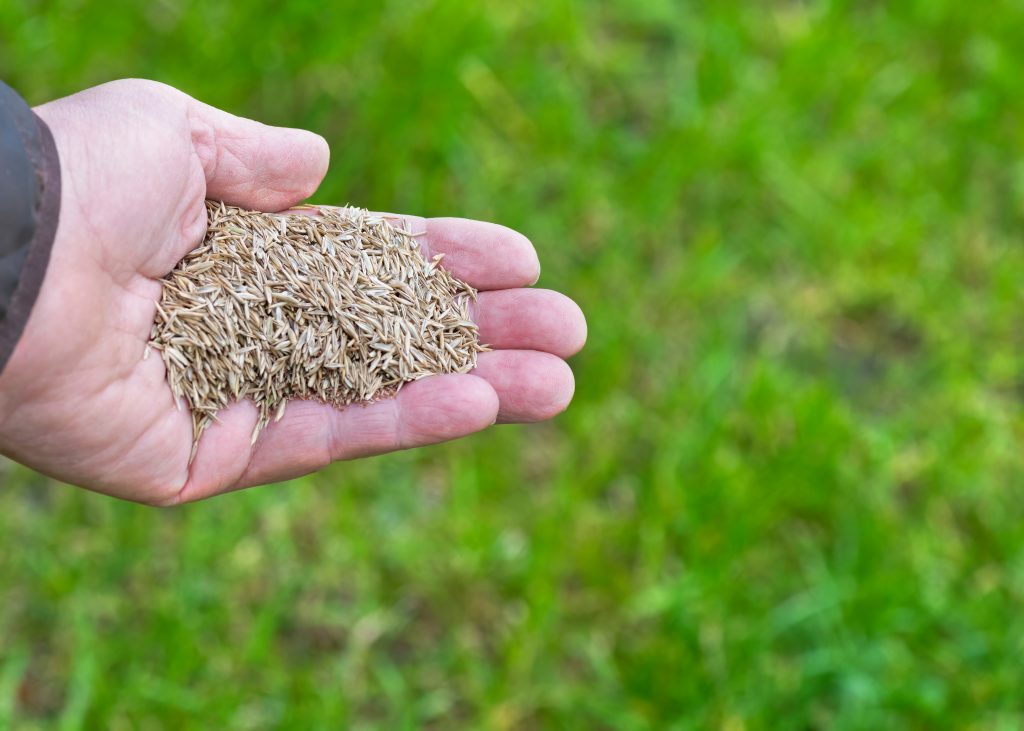As we shake off the chill of winter and open our windows to the refreshing air of spring, it’s time to look at the outdoors with renewed enthusiasm. The long, sunlit days are not just invigorating for us, but also for our lawns. Our gardens begin to break their dormancy, shaking off their winter slumber, eager to grow and thrive.
Just as you plan for a spring-cleaning of your home, your lawn too needs a spring-time boost. After enduring the harsh winter, it requires special care and attention to regain its lush, vibrant state. And that’s exactly where our comprehensive guide to spring lawn care comes into play.
In this guide, we’ll walk you through all the essential steps to revitalise your lawn after the ravages of winter. Whether it’s about understanding the importance of lawn aeration, the science of fertilising, the art of mowing, or the techniques to keep those pesky weeds at bay, we’ve got you covered.
Waking Your Lawn Up After Winter
Post-winter, your lawn may be left with compacted soil, bare spots, accumulated thatch, and early signs of weed growth.
Waking your lawn up after winter involves tasks like:
- Cleaning
- Aerating
- Overseeding
- Fertilising
- Effective watering
The key to a successful spring lawn makeover is to understand your lawn’s specific needs and to meet them accordingly.
This might involve soil testing to identify any deficiencies, choosing the right type of grass seed for overseeding, or selecting the appropriate fertiliser based on your lawn’s nutrient needs.

Your Spring Lawn Care Toolbox
Must-Have Tools for Spring Lawn Care
To start off, you’ll need basic lawn care tools such as:
- A sturdy rake for clearing debris and thatch
- A lawn mower for maintaining the right grass height
- A garden fork or lawn aerator for soil aeration and
- A sprinkler or hose for effective watering
A good-quality rake will help you get rid of leaves, twigs, and other debris that may have accumulated over winter.
A lawn mower is essential for keeping your grass at the ideal height, promoting healthier and thicker growth.
A garden fork or a lawn aerator will come in handy to prevent soil compaction, a common issue post-winter, by allowing air, water, and nutrients to reach the grass roots more easily.
Choosing the Right Products to Pamper Your Lawn
After assembling your physical tools, it’s time to think about the nourishing products your lawn needs to thrive.
This is where our carefully selected products from Top Turf come into play.
Westland Lawn Sand: A traditional lawn treatment, Westland Lawn Sand is perfect for controlling moss in your lawn while promoting healthier, greener grass. It’s easy to use and provides nutrients to help your grass flourish.
Westland SafeLawn Liquid Lawn Feed: This is an excellent choice to feed your lawn. It’s an organic fertiliser that’s child and pet friendly, promotes the growth of beneficial bacteria, and results in a thicker, greener lawn.
Westland Top Soil 30L: Top soil is key for seeding and turfing new areas or revitalising existing ones. Westland Top Soil is enriched with organic matter and helps improve soil structure, aiding healthy root growth.
Westland Peat Free Multi-Purpose Compost with John Innes – 50L: Perfect for overseeding, this compost is enriched with nutrients that ensure strong and healthy growth of grass. Being peat-free, it’s an environmentally friendly choice.

Remember, taking care of your lawn is like taking care of your health. You wouldn’t expect results without the right diet and exercise, right? Similarly, giving your lawn the best care requires both the right tools and products.
Checking Your Lawn
Spotting Winter Damage
Start with a walk around your lawn, observing the general condition. Look out for bare patches, which could be a result of heavy foot traffic, snow mould, or other diseases.
Discoloration is another sign of possible damage. Yellow or brown spots can indicate disease or pest infestations.
Also, be aware of areas with compacted soil, especially around pathways or play areas, as these regions will benefit from aeration.
Identifying Diseases and Pests
Early detection of lawn diseases and pests can save a lot of trouble later. Watch out for irregular patches of discoloured grass, which could signal disease.
Similarly, pests like grubs and cutworms can cause the turf to brown and die. You may also notice birds frequently pecking at your lawn, which could be a sign of a grub infestation.
If you spot any unusual signs and are unsure, consider reaching out to a lawn care professional for a diagnosis.
Soil Testing
A soil test is a great way to assess the health of your lawn.
It measures the pH level and nutrient content of your soil, helping you understand what your lawn needs to thrive.
For instance, if the soil pH is too low (acidic), you may need to add lime; if it’s too high (alkaline), sulphur may be needed.
TOP TIPS
Patience is Key – Wait until your lawn is mostly green and growing before conducting a thorough inspection. Early spring can be deceiving; what looks dead might just be dormant.
Check the Thatch – A thin layer of thatch—dead grass, roots, and debris—can be beneficial. But if it’s more than 1/2 inch thick, it can prevent water and nutrients from reaching the soil, calling for dethatching.
Do a Soil Test – A soil test is like a health check-up for your lawn. It’ll tell you exactly what your soil needs for a healthy, lush lawn. Westland Top Soil can be a great addition if your soil is lacking in organic matter.
Don’t Ignore the Pests – Early detection can save your lawn. If you identify pests, consider using a pest control product or service right away.
Spring Cleaning Your Lawn
Clearing Debris and Thatch Removal
The first step in your spring lawn care routine should be to clear away any leaves, sticks, or other debris that may have accumulated over the winter. This not only tidies up your lawn but also ensures that sunlight, water, and nutrients can reach the grass blades.
Next, it’s time to address any thatch – a layer of dead grass, roots, and debris – that may have built up.
If it’s more than 1/2 inch thick, it can prevent essential resources from reaching the soil, so it’s best to remove it using a thatching rake or a lawn scarifier.
However, if you notice moss among the thatch, you might want to consider using Westland Lawn Sand which not only controls moss but also promotes greener grass.
Fixing Areas of Snow Mould and Other Damage
Snow mould is a fungal disease that can show up as circular, straw-coloured patches on your lawn when the snow melts.
If you spot snow mould, lightly rake the area to prevent the mould from spreading and to allow the grass to dry out. For serious cases, you might need a fungicide.
Other common winter damages might include bare patches, caused by heavy foot traffic or pests.
For small areas, raking out the dead grass and then overseeding might do the trick.
For larger patches, you might need to re-turf. Adding Westland Top Soil can enrich the soil and aid healthy root growth.

Mowing in Spring
The Right Mowing Height for Spring
Spring is a crucial time for your grass as it’s coming out of dormancy and beginning to grow more vigorously.
The general rule of thumb is to keep your grass at about 2.5 to 3 inches in height.
Cutting your grass too short can stress it out and make it more susceptible to pests and diseases.
In early spring, you might want to set your mower a little higher, perhaps to about 3-3.5 inches. This will help protect the new shoots and allow the grass to grow stronger and denser.
As the weather gets warmer, you can gradually lower the cutting height.
Mowing Frequency: Quality over Quantity
How often should you mow?
The answer largely depends on your grass type and the current weather conditions.
Generally, you should aim to mow your lawn once a week in spring. However, during periods of rapid growth, you may need to mow every five days.
TOP TIP
Remember the ‘one-third rule’: never remove more than one-third of the grass blade length at a time.
This helps to minimise stress on the grass.
Maintaining Your Mowing Equipment
For the cleanest cut and healthiest grass, keep your mower blades sharp.
Dull blades tear the grass rather than cut it cleanly, leaving it with jagged edges that can brown and make your lawn more susceptible to diseases.
Spring is a great time to service your mower.
- Check the oil level
- Replace spark plugs if needed
- Make sure the mower’s air filter is clean
Don’t forget to sharpen or replace the blades if necessary.
Watering Your Lawn in Spring
Watering Volume: Less is More
Believe it or not, overwatering can be just as harmful as underwatering.
Overwatered grass is more prone to disease, and constant wetness can suffocate the roots, leading to a weak and thin lawn.
The key is to water your lawn thoroughly, but infrequently. A good rule to follow is to water until the top 6-8 inches of soil (where most turfgrass roots grow) is moist.
Most lawns require about 1 to 1.5 inches of water per week, either from rainfall or irrigation.
Timing Is Everything
Choosing the right time of day to water can significantly improve the effectiveness of your watering.
The best time to water your lawn is in the early morning when temperatures are cooler, and there’s less wind. This reduces evaporation and ensures water penetrates deeply into the soil.
Try to avoid watering in the evening, as lawns left wet overnight are more susceptible to disease.
Best Watering Techniques
It’s important to consider the type of watering system you are going to use.
Sprinkler systems can be a practical and efficient way to water your lawn, especially for large yards. For smaller lawns or specific dry patches, a hose with a suitable sprinkler head may be more efficient.
Remember that evenly watering is essential.
You want to avoid overwatering some areas while leaving others parched.
Check your watering system regularly to ensure even coverage and fix any issues promptly.
Recognising Over-Watering
Signs of over-watering include:
- Water runoff
- Puddling
- A lawn that remains soggy for several hours after watering.
In addition, if you see yellowing leaves, a sudden outbreak of weeds, or disease symptoms like fungus, you might be over-watering.
TOP TIP
Adapt to the Weather – If it’s a particularly rainy week, adjust your irrigation accordingly. Nature might take care of the watering for you.
Keeping Weeds at Bay
Pre-Emergent Herbicides
The old saying “an ounce of prevention is worth a pound of cure” certainly applies to lawn care. Applying pre-emergent herbicides in early spring can prevent many common types of weeds from germinating.
They work by creating a chemical barrier at the surface of your soil that stops the growth of weed seedlings as they try to break through. It’s a bit like laying down an invisible shield over your lawn, stopping the weed invasion in its tracks.
The key to success with pre-emergent herbicides is timing.
You want to apply them in early spring, just before common weeds like crabgrass and dandelions begin to germinate. If you wait until you see weeds popping up, you’ve missed your window – pre-emergent herbicides don’t kill existing weeds.
However, pre-emergent herbicides are not a one-size-fits-all solution.
Different products work against different types of weeds, so you’ll want to identify the most common weeds in your area and choose a product designed to combat them.
Identifying Common Spring Weeds
Weeds vary widely in type, growth habit, and resistance to control methods.
Some common spring weeds you may encounter include dandelions, crabgrass, clover, and chickweed.
Identifying the weeds in your lawn is the first step to successful control. Once you know what you’re dealing with, you can choose the most effective control method.
Post-emergent Herbicides
While pre-emergent herbicides play a crucial role in preventing weed growth, they won’t help you tackle existing weeds that have already established in your lawn.
That’s where post-emergent herbicides come into play.
Post-emergent herbicides work by killing actively growing weeds.
They are absorbed through the foliage and transported throughout the plant, killing the entire weed from leaf to root.
They are most effective when weeds are actively growing, making spring an ideal time to apply them.
These herbicides come in two forms:
- Selective
- Non-selective
Selective herbicides target specific types of weeds, leaving other plants unharmed. For instance, they can kill broadleaf weeds like dandelions or clover without affecting your grass.
On the other hand, non-selective herbicides will kill any plant they come into contact with and are usually reserved for serious weed problems or for clearing areas of all vegetation.
To successfully use post-emergent herbicides:
Identify Your Weeds – Knowing the type of weed you’re dealing with can help you choose the most effective herbicide. Not all herbicides work on all types of weeds.
Apply at the Right Time – Post-emergent herbicides work best when weeds are actively growing. Also, avoid applying during hot, dry weather or when rain is expected, as this can reduce effectiveness.
Follow Instructions Carefully – Using too much herbicide can damage your lawn, while too little may not effectively kill the weed. Make sure to read and follow all product instructions for the best results.

Let Your Lawn Breathe
Choosing the Right Time to Aerate
The best time to aerate your lawn is during its peak growing season – and for most types of grass, this is in the spring.
That’s because the grass can heal and fill in any open areas after soil plugs are removed.
If your lawn is especially compacted or has a heavy thatch layer (a thick layer of dead grass and other organic matter), spring aeration could be just what it needs to bounce back to life.
How to Aerate Your Lawn
Aeration might sound complicated, but it’s actually a straightforward process. Here are the basic steps:
Prepare Your Lawn – Before you start aerating, mow your lawn slightly shorter than usual and water it well. This will make the aeration process easier and more effective.
Choose Your Aerator – There are several types of aerators available, but the most effective for home lawns are core aerators. These machines remove small plugs of soil from your lawn. If you don’t want to buy an aerator, they’re often available for rent from home and garden centres.
Aerate Your Lawn – Run the aerator over your lawn in the same way you would a lawnmower, making sure to cover the entire lawn. For heavily compacted lawns, you might need to make several passes.
Finish Up – Leave the extracted soil plugs on the lawn – they contain beneficial microorganisms that can help break down thatch. If desired, you can apply a top-dressing of compost or sand after aeration to further enhance soil structure and promote healthy grass growth.
Remember, while aeration can be hugely beneficial, it’s not always necessary for every lawn every year.
If your lawn is looking healthy and growing well, you might not need to aerate. But if you’re dealing with compacted soil or a lot of thatch, spring aeration could be just the ticket to revitalise your lawn.
Overseeding and Fertilising
How to Overseed
Overseeding is the practice of sowing grass seed directly into existing turf.
This is an excellent way to improve your lawn’s density and color, and it can also help to introduce more resistant grass varieties into your yard.
To overseed successfully:
Prepare Your Lawn: Start by mowing your lawn shorter than usual and raking thoroughly to remove any dead grass or debris. This will help the new seed to make contact with the soil.
Choose the Right Seed: Different types of grass thrive in different conditions, so it’s essential to choose a type that suits your yard. You may want to consider grass varieties that are drought-tolerant, or more resistant to pests or diseases.
Spread the Seed: Spread the seed evenly over your lawn. A spreader can be a useful tool for this task. After spreading, lightly rake the area to cover the seed with a thin layer of soil.
Water Regularly: Keep the overseeded areas well-watered until the new grass is well established.

How to Fertilise
While overseeding introduces new, healthy grass to your lawn, fertilisation provides the nutrients that your grass needs to grow thick and lush.
Fertilisers supplement your soil’s natural nutrient supply and can help your lawn recover from winter damage.
To fertilise your lawn effectively:
Choose the Right Fertiliser: Your choice of fertiliser will depend on your soil’s needs. This is where a soil test comes in handy – it can tell you exactly what nutrients your soil is lacking.
Apply the Fertiliser: Fertiliser can be spread using a handheld or broadcast spreader. Try to apply it evenly to avoid burning your grass with too much fertiliser.
Water Your Lawn: After applying fertiliser, water your lawn to help the fertiliser penetrate the soil and reach the roots of your grass.
One product to consider for your spring lawn fertilisation is Westland SafeLawn Liquid Lawn Feed.
This product is a natural lawn feed that’s safe for children and pets, and it can help to create a thicker, greener lawn.
A Green Goodbye
I hope you’ve enjoyed this extensive guide on all things lawn care and maybe a few of the “top tips” may come in handy.
Don’t forget, taking care of your lawn is a rewarding investment.
Each step, from cleaning up winter’s leftovers to mowing, aerating, and watering, contributes to a healthy, lush lawn. While it may seem like a lot, the payoff is a beautiful garden right at your doorstep.
Remember, conditions may vary, so adapt these tips to suit your unique lawn.
So, here’s to a beautiful spring and a lawn that’s ready to be enjoyed.
James - Senior Developer
James - leads the development team, ensuring high-quality code while staying up-to-date with the latest tech trends. Outside of work, he enjoys rock climbing, fuelling his passion for adventure and challenge.
